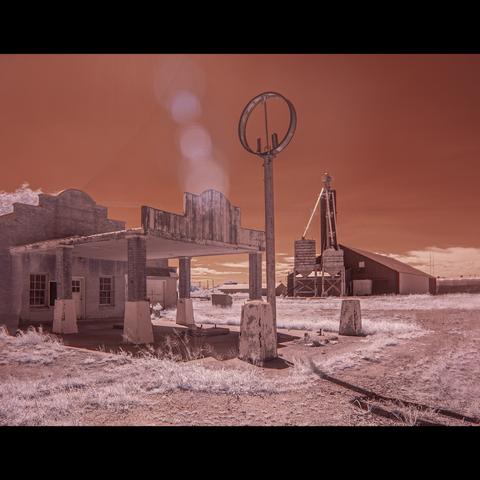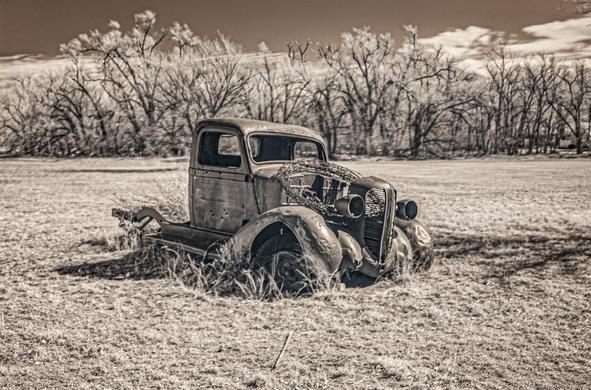#digitalinfrared
#digitalinfrared shot on a cheap, broken Nikon D80 with a missing shutter curtain
Sports Photographer and WhiteWall Team Up for Incredible Infrared Series https://petapixel.com/2024/08/01/sports-photographer-and-whitewall-team-up-for-incredible-infrared-series/ #digitalinfrared #actionsports #Spotlight #whitewall #infrared #sports #News
#digitalInfrared of a pair of Mandarin ducks at Volkspark Friedrichshain
#urbanWildlife #berlin #MastoArt
when making these #digitalInfrared images, the original image often looks pink in color. usually i convert to #BlackAndWhite and tweak a few other things because I want it to resemble Kodak HIE film (no longer in production) with which i had a serious love affair. sometimes, though, i also like the unedited, pink version. this is one of those times. which do you like better?
#MastoArt #berlin #photography #toyCamera
#StandingStoneSunday #Llandudno #NorthWales
#Infrared #InfraredPhotography #Landscape #LandscapePhotography #LumixGH3 #DigitalInfrared #Toned #BlackAndWhitePhotography #BlackAndWhite
The Bardic Circle, looking the other way.
#StandingStoneSunday #Llandudno #NorthWales
#Infrared #InfraredPhotography #Landscape #LandscapePhotography #LumixGH3 #DigitalInfrared #DoubleSquare #Toned #BlackAndWhitePhotography #BlackAndWhite
The Bardic Circle, erected in 1963 for the Llandudno Eisteddfod (Welsh cultural festival).
#StandingStoneSunday #LanyonQuoit #Cornwall #Kernow #Dolmen #Megalith
#Infrared #InfraredPhotography #Landscape #LandscapePhotography #LumixGH3 #DigitalInfrared
Lanyon Quoit, near Penzance, Cornwall.
Photo Series of Natural Pink Salt Fields Looks Like Infrared Images
A photographer who is known for his infrared images has created a surreal body of work that shows the uniquely pink salt fields of France in a way that looks infrared, but instead only uses the natural colors of the area.
Paolo Pettigiani, based in Turin, Italy, is an exhibited and published photographer and co-founder and art director of No Panic, a creative agency.
His work primarily uses infrared (IR) photography, and one of his pieces may be very familiar to Adobe users: Pettigiani's image was chosen as the loading screen for Adobe Lightroom Classic 2021.
One of Pettigiani's recent series doesn't use his trademark infrared photography because the location that he scouted already creates the illusion of IR with bright hues of pinks and blues -- a seemingly unnatural mix of colors to find in nature, but possible nevertheless.
As a creative from a young age and a Design and Visual Communication graduate at Politecnico in Turin, Pettigiani started to research how to visually combine photography and graphic design into unique imagery where colors play a particular focus and arrived at IR photography.
View this post on Instagram
A post shared by Paolo Pettigiani | infrared (@paolopettigiani)
It helps Pettigiani express the essence of his creative vision -- "a fusion of science and creativity, playing with colors, shapes, and contrasts in order to create a visual mood to get the viewer lost into a new and unseen world that question reality as we see it."
Although his recent work titled, "Dunaliella salina" -- which is also the name for a type of micro-algae found in sea salt fields and is responsible for the bright pink hue seen in the water -- doesn't feature IR, all of the other elements are still there.
Pettigiani came across the unique salt fields in southern France which fired his creativity. The landscape gave him "the geometry and the minimalism of the lines created by water and sand, paired with the natural elements of seaweed," he says.
He is always on the lookout for geometry, minimal spaces, and colors -- the three key elements that form his composition considerations, which are also present in this project.
The goal of this project was to invite emotions in the audience the say way his IR artworks do and to highlight the beauty of nature, which can be found in everyday actions and places.
To capture his striking collection, Pettigiani used Canon EOS 5D Mark III and DJI Mavic 2 Pro Drone. Both are converted to the full spectrum for IR photography when shooting other types of work, such as a similar project he shot in Salar de Uyuni in Bolivia, although with IR.
As for any future projects, Pettigiani tells PetaPixel that he has just come back from another road trip along Normandy and Brittany, France, and although didn't find any salt fields, he did create some interesting images he intends to publish soon.
More of Pettigiani's work can be found on his website and Instagram.
Image credits: All images by Paolo Pettigiani and used with permission.
#inspiration #travel #digitalinfrared #france #infrared #infraredcamera #infraredphotography #ir #landscape #paolopettigiani #saltfields
VSCO Launches New Set of Filters that Simulate Infrared Photography
VSCO has announced three new infrared filters -- two color and one black and white -- that were originally shared with the VSCO community in early June but are launching publicly today.
The new filters are "simulated infrared filters" and give photos the look as though they were captured on an infrared sensor. IR photography refers to light that is beyond the spectrum of electromagnetic radiation that humans can see, although they can feel it as heat. The warmer something is, the more infrared radiation it emits, which is why this type of photography has applications in science, medicine, astronomy, and more -- as VSCO explains in its press release.
Color IR film was originally developed by Kodak for military surveillance use in the 1940s which made it easier to spot hidden targets. The film converted invisible IR light into a pink or red color that was noticeable in an image, which resulted in bubblegum pink forests and crimson red plants all while keeping the rest of the landscape ordinary looking.
Source: VSCO
Later on, IR film was released as a consumer product in the 1960s -- becoming especially favored during the emerging psychedelic movement -- and was used in creating iconic album covers for artists, such as Jimmy Hendrix, Frank Zappa, and Donovan. Photographers, such as Richard Mosse, who documented the conflict in the Democratic Republic of Congo, also embraced this type of film as part of his work.
Although Kodak's color IR film is now discontinued, it still appeals to many photographers who remove the IR blocking filter in digital cameras to create other-worldly images with striking colors. To replicate this type of result, VSCO explains that its IR filters are an approximation of the most common visual features of real IR photos without actually having access to IR information. This means that greens and yellows are turned to pink and red, blue skies are darkened, and brightness is influenced by the red channel.
Image by Joel Flory
The first filter is built with landscapes in mind, covering a large spectrum of greens and yellows found in plants. This filter is unsuitable for portraiture as it affects skin tones, which is why VSCO has developed the second filter which allows users to preserve natural skin tones while still making the most of IR filter effect for the rest of the image. Also, the filter strength slider in the app has been designed to move between pink greens and red greens to capture the full look of IR photography.
Image by Carter Moore. Source: VSCO Image by Carter Moore. Source: VSCO
The third filter is a monochrome one, which turns plants and greens pale white while simultaneously darkening the skies, resulting in more dramatic landscape images. For this filter, the strength slider adjusts the brightness of the IR look on plants.
Image by Carter Moore. Source: VSCO
Users will be able to apply these filters to their images in the VSCO app. Examples of early-access images uploaded by users with the VSCO IR filters applied can be seen on the VSCO press release.
#mobile #news #postprocessing #digitalinfrared #editingapp #editingapps #infrared #ir #mobileediting #vsco #vscoacademy #vscoappupdate


